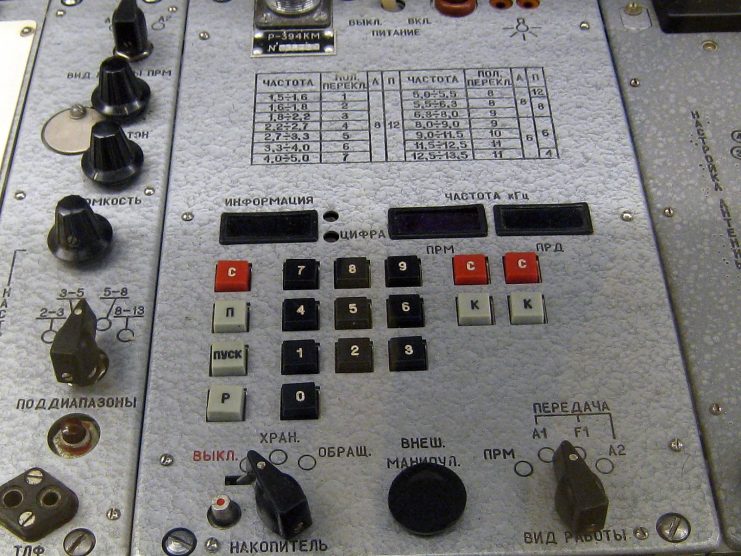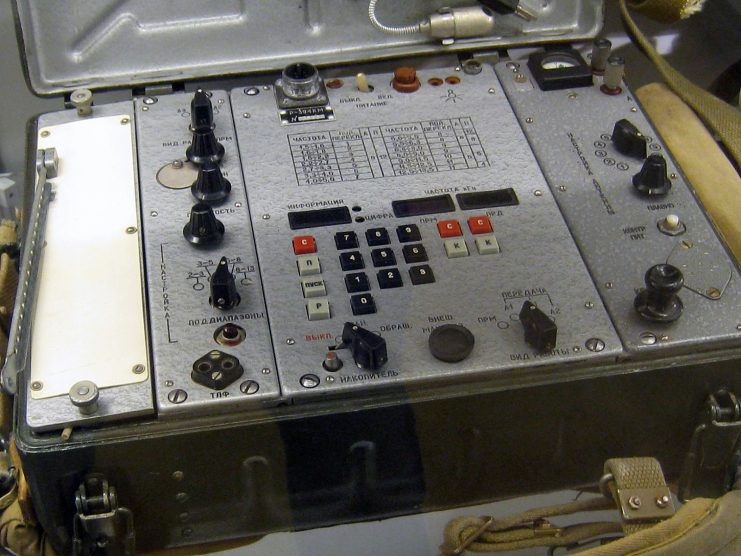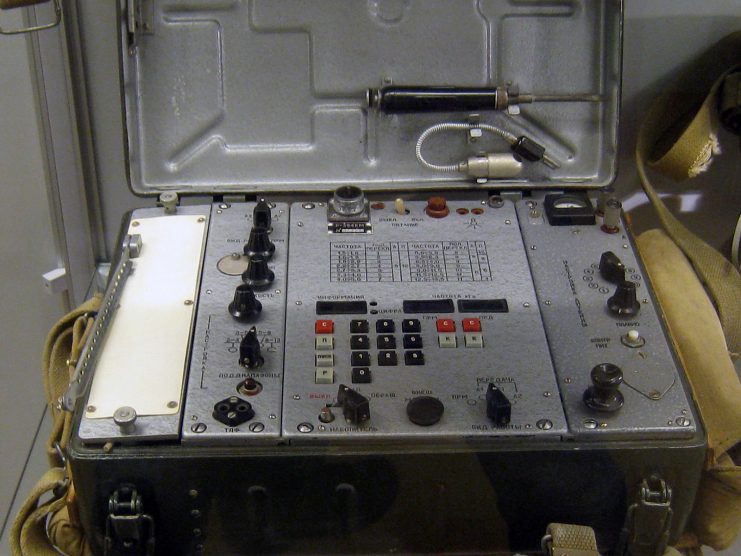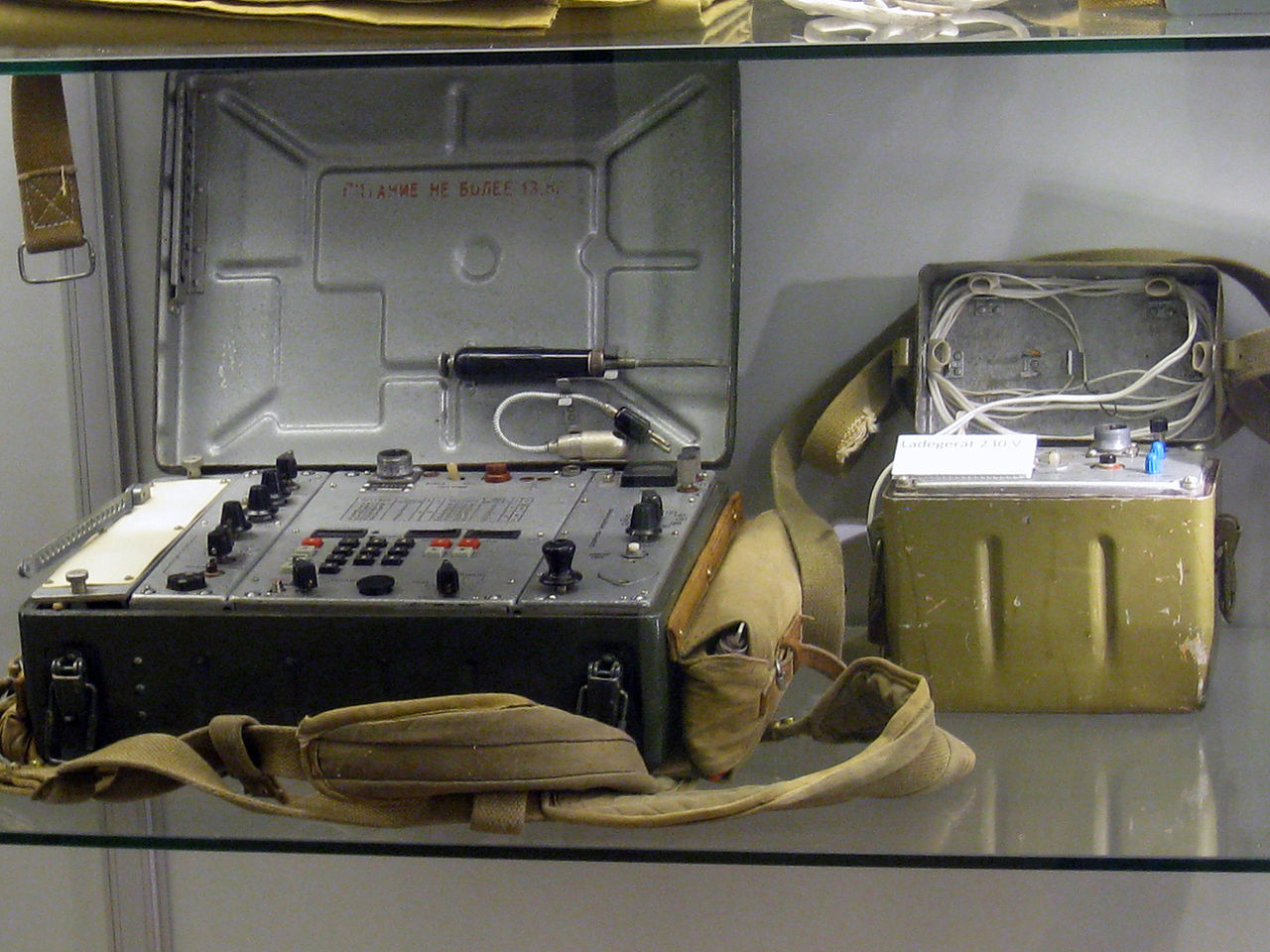Soviet Spy Radio: In an area cleared for a new open-cast lignite mine in the Hambach Forest about thirty 20 mies west of Cologne archaeologists were on the hunt for the remains of a Roman settlement.
However, what they found was much more recent. Dating from the Cold War, what they uncovered was an R-394 Soviet era transmitter and receiver, ‘factory fresh’ and buried in a shallow pit in a metal box according to LiveScience.

Lead archaeologist Erich Classen from the Rhineland Regional Association said of the find, ‘We think the radio will work if a new battery is available.’
The equipment was thought to have been buried sometime after 1987, when the R-394 ‘swift’ spy radios were first manufactured in the USSR.
The perfect condition of the equipment buried for something like thirty years suggests that it has never been used.
With a range of 1,200 kilometres it would have been capable of communicating directly with agents as far away as Warsaw in Poland.
It is likely that the radio was used by a spy cell observing the nearby Jülich Nuclear Research Centre and the military airbase at Nörvenich. The airbase played host to American Pershing missiles up to 1995.

It was wrapped in paper covered in numerical sequences written out in Russian handwriting which correlate with similar sequences discovered on Soviet lists.
The care with which the radio was hidden in the forest suggest that it was expected to be unearthed and put to work by an operational spy cell in the region.
The hermetic seal was still intact when the archaeologists discovered the metal box into which it was sealed, reporting that there was a ‘gasp of air’ when the box was opened.
Further details of the burial of the radio in this location in Hambach Forest are unlikely to be revealed without specialist historical research, however, the radio is currently on display in the German city of Bonn at the LVR-Landes museum until March 29 2020 alongside other artefacts uncovered by the archaeological dig.

The Swift Mk 4, or Стриж (Strizh) in Russian, was a digital high frequency spy radio station used extensively by Warsaw Pact countries up until the break-up of the Soviet Union and fall of the ‘Iron Curtain’ in 1989.
It was a favourite tool of the KGB, GRU and the STASI in East Germany and was similar in design to its military iteration the R-394KM.
The Swift was split into three modules, thought to aid concealment and carriage, a receiver, transmitter and DSU (Digital Storage Unit).
It was clamped together with an ingenious spring-loaded system but could not be used unless all three modules were present along with a 12v DC power source, a fail safe feature that prevented use by unauthorised persons.
Archaeologists looking for a Roman villa in western Germany unearthed a Soviet spy radio—manufactured in 1987—that had been sealed in a metal box and hidden just a few miles away from a nuclear research center and military air base. https://t.co/HLi7mlNFSR pic.twitter.com/JPQSWv02vt
— Archaeology Magazine (@archaeologymag) February 24, 2020
The DSU had a built-in burst encoder allowing pre-encoded messages to be stored prior to transmission. Messages were recorded and sent at incredibly high speed the moment a link with the target receiver was confirmed, thereby minimising any risk of detection or intercept by enemy listening stations.
The controls on the Swift Mk 4 R-394 were very similar to its military cousin except that it does not have a serial number or model number inscribed anywhere on its casing.
The Hambach radio is typical also in that the controls are labelled in English language and Roman numerals, distinguishing the unit from the military equipment.
Historians and commentators have speculated that the use of Western characters on the Swift might have been to disguise its Russian origin.
Have You Heard of The Special Forces Ghost Car That Operated in Bosnia
A number of these radios have been discovered over the years since the end of the cold war. In 2004 a large cache was discovered in West Germany which still had fully functional batteries, ready to go.
